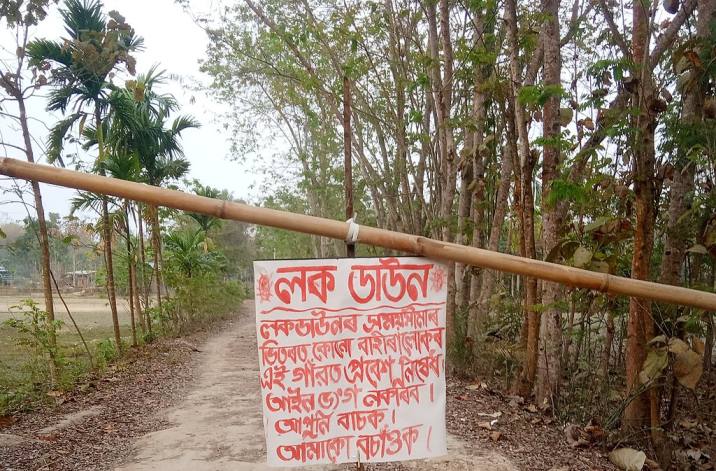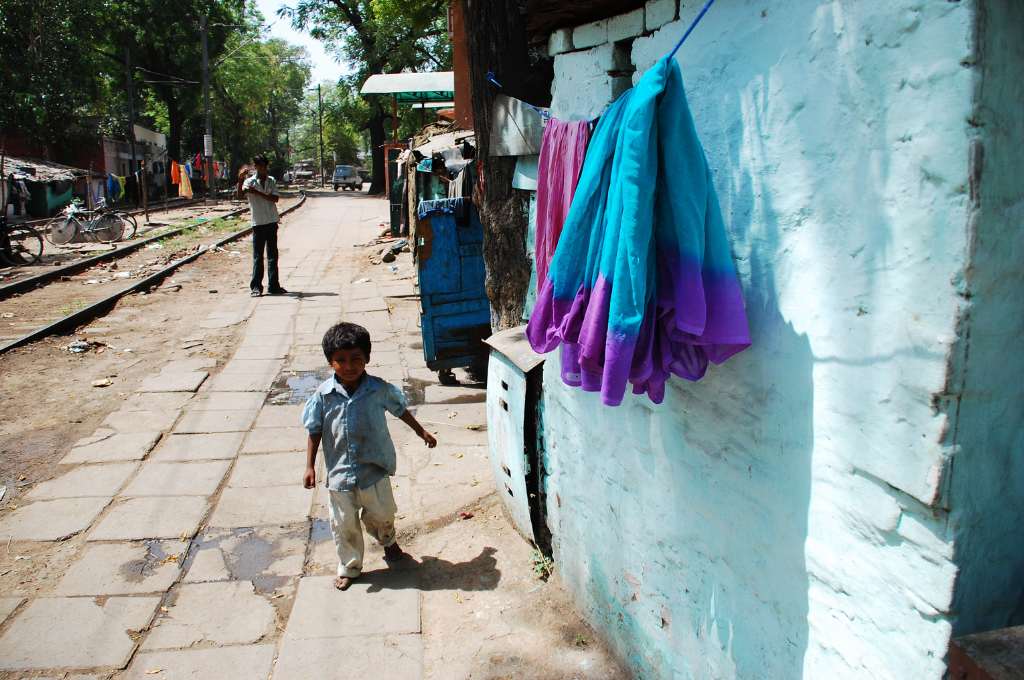During the National Mental Health Survey (NMHS) in 2016, Assam had the lowest number of deaths due to ‘neurotic and stress-related disorders’ among 12 states across six regions in the country. In 2020, during and after the COVID-19 lockdown, the state saw a 35 percent spike in suicide rates. In 2021, this went up to 36.9 percent and the National Crime Records Bureau (NCRB) recorded 3,262 cases of suicide. The pandemic seems to have pushed the state, which has stayed relatively resilient through past political turbulence, to the edge. Does it have the infrastructure and resources to cope with this change?
Organisations working in Assam confirm the growing distress on the ground. Hardeep Singh Bambrah, senior leader at Piramal Swasthya Management and Research Institute (PSMRI), which works with the National Health Mission (NHM) in Assam, says communities are reporting rising insecurity and anxiety. Dr Mintu Moni Sarma and Dr Nilesh Mohite, psychiatrists who work with the Action Northeast Trust (ANT), say cases of depression and anxiety have increased significantly. Dr Mintu, who works in lower Assam, says, “Before the pandemic, we attended to more cases of psychosis, such as schizophrenia, and fewer common mental disorders, such as anxiety. This has changed and now we are seeing much higher numbers of common mental disorders.”
A 2020 survey conducted by Assam Police, with help from the Department of Psychiatry, Gauhati Medical College Hospital (GMCH), found that 46 percent of callers suffered from anxiety, 14 percent from depressive symptoms, and 8.3 percent from depressive disorders. About 5.4 percent of them had suicidal thoughts. ANT has also been seeing a sudden increase in the incidence of Obsessive-Compulsive Disorders (OCD) at their camps, with some patients washing their hands repeatedly, sometimes until their skin starts peeling.
Experts point out that this is unprecedented in a state with otherwise relatively stable indicators for mental health. Dr Mintu points out that the region is familiar with conflict and violence. “I have lived here through disturbances and observed that people have developed a kind of resilience. It may have something to do with the traditional external support they have in their communities. But COVID-19, with the enforced isolation, has been new for the community.”
The current spate of mental illnesses in rural communities has been set off by the need for isolation and the uncertainties thrown up by the pandemic, including loss of livelihoods and a long period of economic distress.
To deal with this, the Assam government launched Monon, a telepsychology helpline in collaboration with PSMRI’s 104 service and the Gauhati Medical College Mental Health Department, to provide mental health support to COVID-19 patients across the state. According to Hardeep, between June and December 2022, volunteers under Monon proactively reached out to 22,618 COVID-19 patients in quarantine or in isolation centres. Volunteers operating the helpline discovered that most beneficiaries had mental health symptoms due to psychosocial factors rather than the disease itself. These included unemployment, financial insecurity, and stigma.
Multiple triggers for deteriorating mental health
Of the 3,262 suicide cases recorded by the NCRB in 2021, 659—or 20 percent—involved daily wage labourers. Dr Nilesh, who caters to the marginalised population in the state, says the number went up significantly when migrant labourers were compelled to return from urban centres and other states after the lockdown was announced on March 25, 2020. Approximately 3.9 lakh migrants returned to Assam. Estimates show that only half the interstate migrants from Northeast India have returned to work.
Hardeep says he has heard of loss of livelihood among many, and the floods in June this year have made matters worse. “We have been hearing many heart-rending stories on economic crises from faith-based leaders, panchayat members, and volunteers. There is one that sums up the situation on the ground. An autorickshaw driver had to sell off his vehicle during the pandemic. Now he does not have the money to buy it back,” he says.

A study published in the Asia Pacific Journal of Public Health has registered a shift in the age group suffering from depression, anxiety, or stress. During the 2016 NMHS, the prevalence of mental disorders was higher in the 40–49 age category, but in 2020 it was higher for those between 26 and 35 years of age. Of the suicides, 2,351 were male and 911 were female. This could indicate that young male earners are affected more. As many migrants have not returned to earlier jobs, there is also more competition in the local ecosystem.
However, Dr Nilesh points out, food security is not an issue in the region as most people own land and ponds. They rely on rice or fish. Most locals are self-employed and many of the returned migrants are pulling back into agriculture and fishery. Hardeep says many are seeking loans and microfinancing options to start something of their own.
During the lockdown, the incidence of domestic violence increased, setting back the mental health of women.
Organisations have also noted other triggers brought on by COVID-19. In some cases, drug addiction has added a layer of complexity. “Some locals migrate to Dubai or UAE and are used to earning well. When they returned due to the pandemic, they went into depression and got into drugs. We saw such patients before travel restrictions were lifted,” said Dr Nilesh. Suicide has also been common among addicts because the state government’s crackdown on drugs has affected supply, he added. During the lockdown, the incidence of domestic violence also increased, setting back the mental health of women. To make it worse, this demographic is not prompt about seeking help. “Women were depressed for months together and came to our campus only when they became non-functional,” Dr Mintu says.
Increasing awareness and improving last-mile infrastructure
Awareness about mental illnesses has improved in Assam over the years, although it is still not at the level health providers would like it to be.
“When I started the camp 19 years ago, I would see one or two patients occasionally. Now, attendance is very good. There is less stigma around it. If someone is suicidal or in depression for weeks, they know it is a good idea to go to a doctor,” says Dr Mintu. However, people find it easier to identify severe mental disorders and tend to get help only in late stages of illness. Otherwise, they presume they are ‘stressed out’ or ‘tense’ and ignore symptoms.
The state does not have adequate number of trained resources who can help patients identify indicators and markers of mental disease. PSMRI’s 104 service offers mental health counselling as one of its four services, but Hardeep believes awareness about such provisions needs to grow. According to him, if you go to a person in a village and ask them if they are aware that the 104 helpline service provides mental health counselling, most will tell you that they do not know about it. So, there is a lot of work that the government can do in terms of a) increasing awareness around these services, and b) developing infrastructure and building capacities at the last mile.
Organisations operating in remote areas also say that out-of-pocket expenditure for healthcare is high here, partly because of the terrain. “To get to some villages, you change boats twice or four times. In other places, it is hilly terrain,” says Hardeep. Additionally, as things return to normal, people are wary of spending money on transportation or travelling long distances to avail medical services because financially they are worse off than before. “They can’t afford bus or auto fare to go the distance to a private practitioner, district hospital, or block hospital. They would rather have the services rendered at their village doorstep. And we’re seeing this in the form of increased demand for our mobile medical units.”
Not enough trained personnel
The 2016 NMHS showed Assam at lower risk of mental health concern than other states. However, even then, availability of mental healthcare was lower here than in other states. It is among the states with a high deficit of psychiatrists.
Government-run health and wellness centres under Ayushman Bharat have yet to build adequate capacity to take on mental healthcare.
The District Mental Health Programme (DMHP) has helped monitor the number of suicides and report them, but it is underutilised for treatment. Dr Mintu says, “We had thought, as a small nonprofit, we would see a decrease in patient load because of the free consultation and medicines the DMHP provides. But this has not happened. Locals are not confident the psychiatrist will be available when they get to the clinic after travelling far. They’re also not sure they will continue getting the medicines or counselling they need. After all, it is not only about remission of symptoms.” The government-run health and wellness centres under Ayushman Bharat tend to focus on non-communicable illnesses, such as hypertension and diabetes, and maternal and child health. They have yet to build adequate capacity to take on mental healthcare.
Capacity building
Hardeep says mental health needs to be prioritised in the wake of the pandemic despite the challenges—lack of sufficient human resources and existing healthcare personnel who do not have the training needed for mental illnesses. He also believes there is need for contextualised solutions. “The state is so diverse that a one-shoe-fits-all policy would not work here. Each district, block, and village is different. Every tribal community has its own set of beliefs and customs.” It is key to sensitise resources to the culture of the community for a mental health programme to be effective.
Each project will need to collaborate with local and other stakeholders. Dr Mintu says that informal practitioners and faith healers, for instance, often refer patients to the psychiatrists when they realise they need extensive help. “We have, in fact, held some workshops with informal practitioners as they can be important resources.”
Fortunately, COVID-19 has given the cloud of mental health in Assam a silver lining. Health workers have been compelled to adopt and adapt to technology. This opens up an opportunity for Assam to use a combination of telepsychiatry and mobile medical units to attend to patients. Telemental health can help bridge the widening gap between the mental health epidemic and the lack of infrastructure and resources to deal with it.







